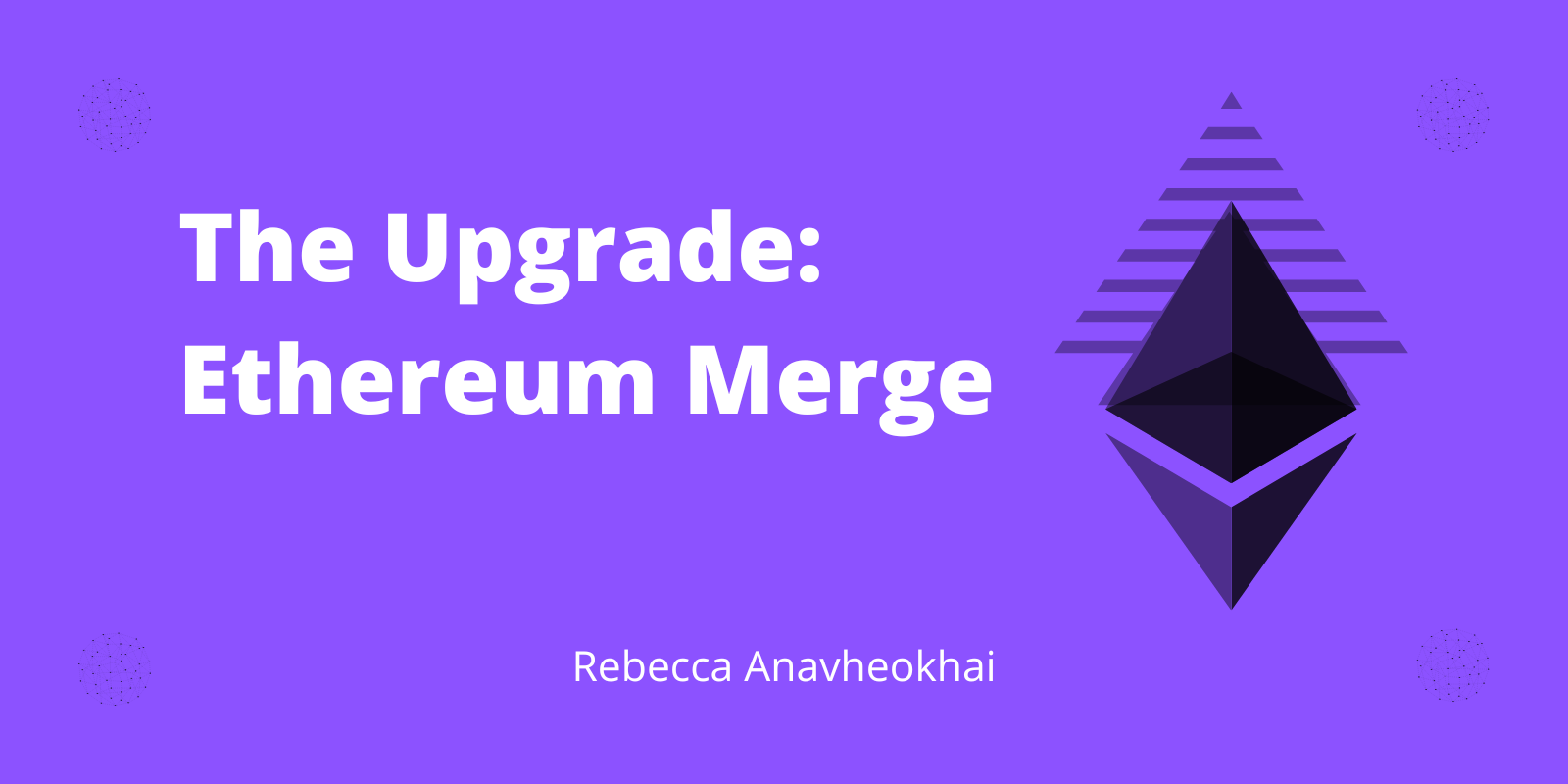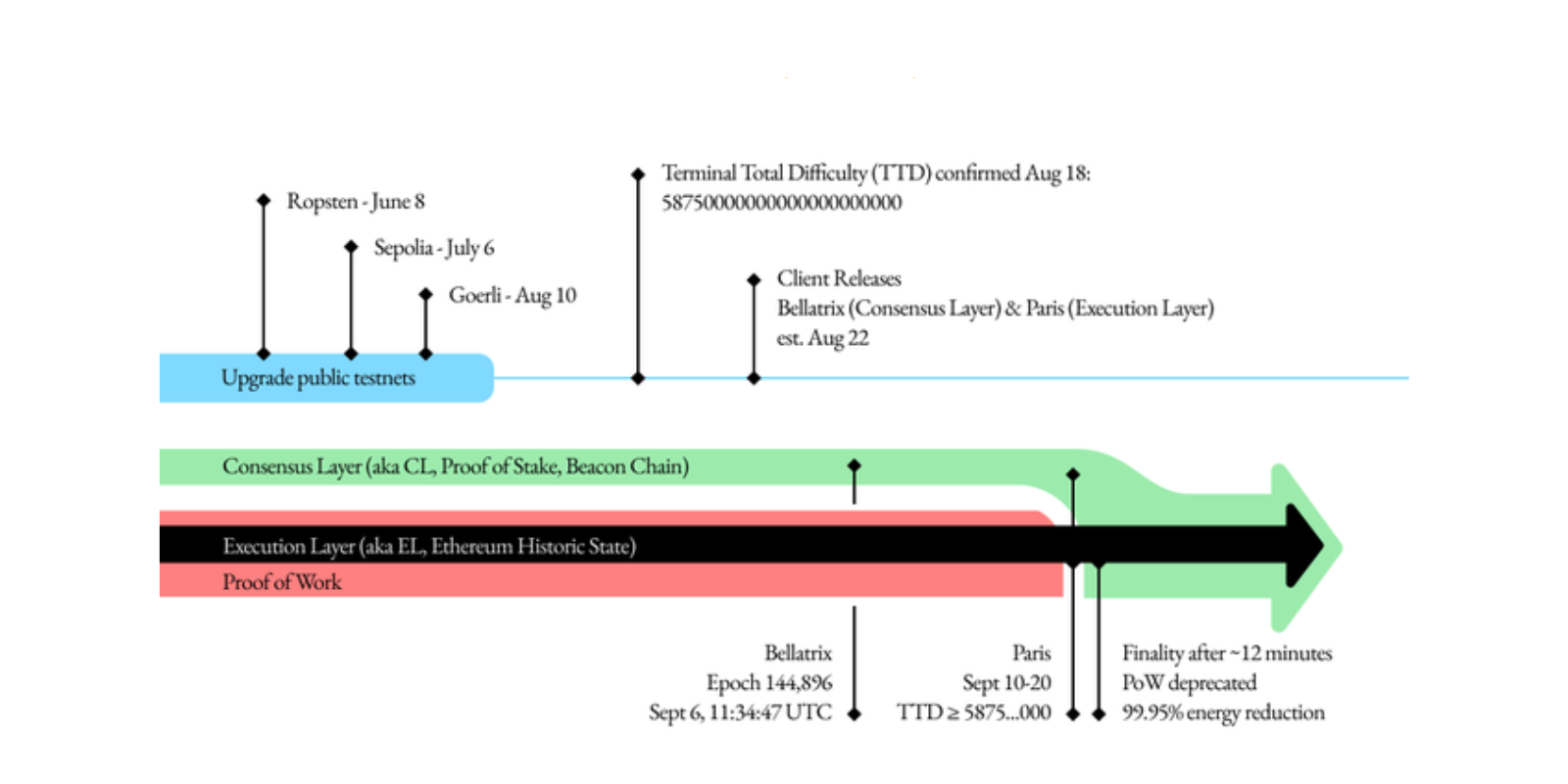The Upgrade: Ethereum Merge.
 Rebecca Anavheokhai
Rebecca Anavheokhai
'The Ethereum Merge'. If this was a movie, I can picture a woman whispering it whilst there's a suspenful music in the background and we're being shown snippets of this 'Merge'. That's besides the point though, I've once again brought all the tea about this 'Merge' while educating the newbies and oldies of the Web3 community.
What Is The Merge?
This merge that we speak of in all honesty is only an upgrade, a better version if you will, of the former Ethereum network. The Ethereum merge happened in two stages. To understand this merge, let’s talk about the Ethereum network a little bit. The Ethereum network has two main chains, the Mainnet Chain proof-of-work(PoW) and the Beacon Chain proof-of-stake (PoS).
Now, the first stage of the merge, codenamed Bellatrix, happened on the 6th of September, 2022. This first stage was the preparation of Ethereum's beacon chain to activate its transaction processing feature. The beacon chain was added on the 1st of December 2020. Before now, the beacon chain was basically a staging area on the Ethereum network and it couldn’t process transactions although it existed in parallel with Ethereum's mainnet (This could process transactions).
The second stage codenamed the Paris upgrade, which was the last stage was completed on the 15th of September, 2022 resulting in the birth of Ethereum 2.0. With the first stage completed, Ethereum’s beacon chain was now ready for activation. The activation meant that the Beacon chain would now be the main chain for processing transactions. This means that Ethereum will now adopt the Beacon Chain’s method of processing transactions i.e proof-of-stake validation style.
With this merge, Ethereum has now officially switched to using the Beacon Chain as the engine of block production. This means that mining is no longer the means of producing blocks. Instead, the proof-of-stake validators have adopted this role and are now responsible for processing the validity of all transactions and proposing blocks.
In a nutshell, the Merge is about merging the Ethereum mainnet (proof of work) network with the complete features of the Beacon Chain (proof-of-stake blockchain), into one chain and making the Ethereum blockchain permanently proof-of-stake.
The upgrade in question here is the transition of proof-of-work (PoW)consensus to the proof-of-stake (PoS) consensus, not an expansion of network capacity.
Why Did The Merge Happen?
As I said earlier, the merge is an upgrade of Ethereum's blockchain. The PoW system involves nodes – computers that are part of a large network – competing with one another to solve complicated math problems. The successful ones are then able to mine the next block of transactions and create new coins.
Ethereum's blockchain was upgraded to the PoS system, which is more energy efficient and environmentally friendly. Nodes are selected via an algorithm that has a preference for nodes that hold more of a network's currency. Simply put, their 'stake' in the network is rewarded over the computer power that's rewarded in the PoW system.
From the brief explanation of PoW and PoS, you probably now understand better why Ethereum made the choice of upgrading its blockchain, PoS simply put, is better for the environment and we're all about saving the planet. It will also make transactions more efficient.
This transition allows the Ethereum network to reduce its energy consumption by around 99%.
What Does The Merge Mean For The Web3 Community?
This merge shouldn't cause crypto-asset owners to fret or worry as there isn't any action you have to take. It could have an impact on crypto prices but that's what we're all hoping for.
The Ethereum foundation has said ether holders don't have to do anything except watch out for scams. If an app or crypto wallet sends you instructions or recommendations, you're to make sure to verify the notices are actually coming from those platforms.
The merge is the first major step in a series of a large number of steps that could bring millions of users into Web3. The merge opens up the way for further upgrades which will further ensure level 2 scalability.
Unfortunately, this merge won’t solve the problem of high gas fees on the Ethereum network. Honestly, we wish this did, but for now, we wait for future upgrades like danksharding.
The upgrade Ethereum made was definitely a good choice since cryptocurrencies like Bitcoin and Ether have had significant drops recently alongside other financial assets like stocks, hopefully, this merge can make things make better in terms of stock prices.
Subscribe to my newsletter
Read articles from Rebecca Anavheokhai directly inside your inbox. Subscribe to the newsletter, and don't miss out.
Written by

